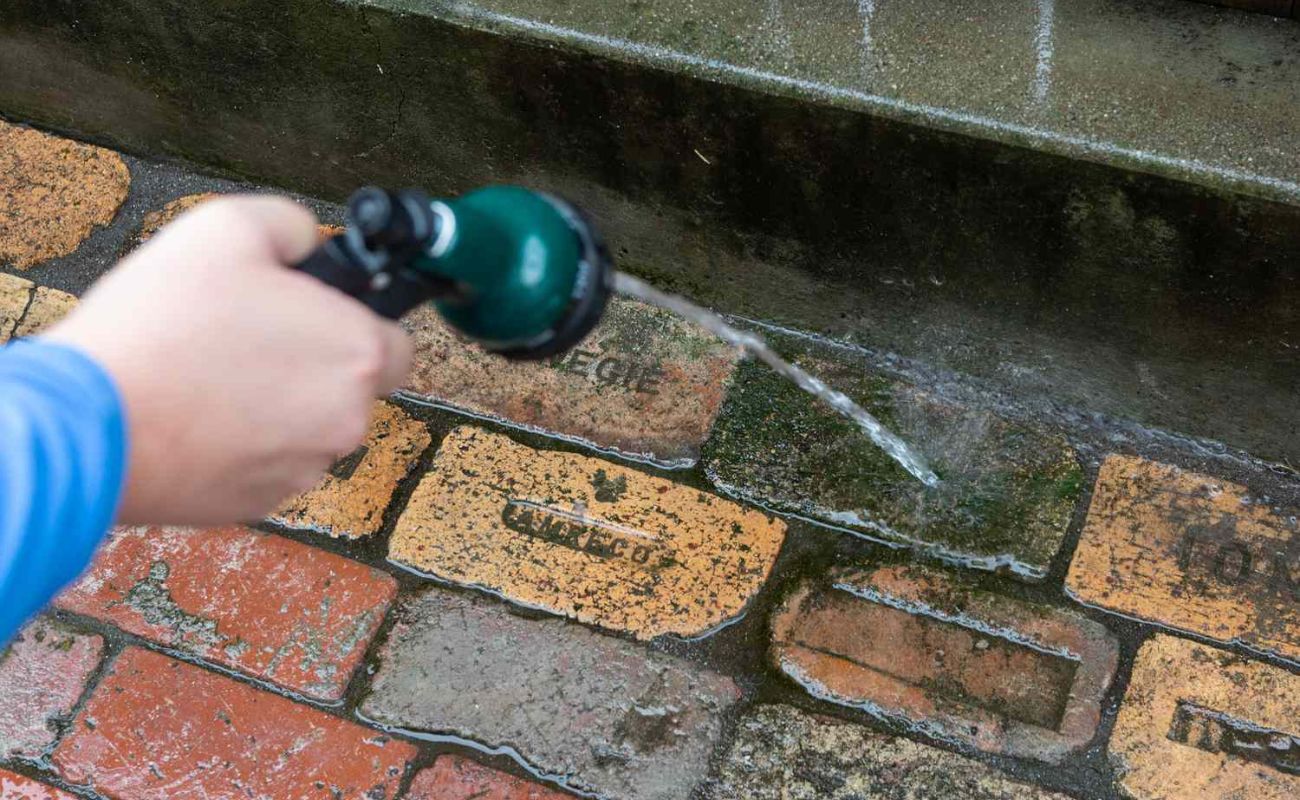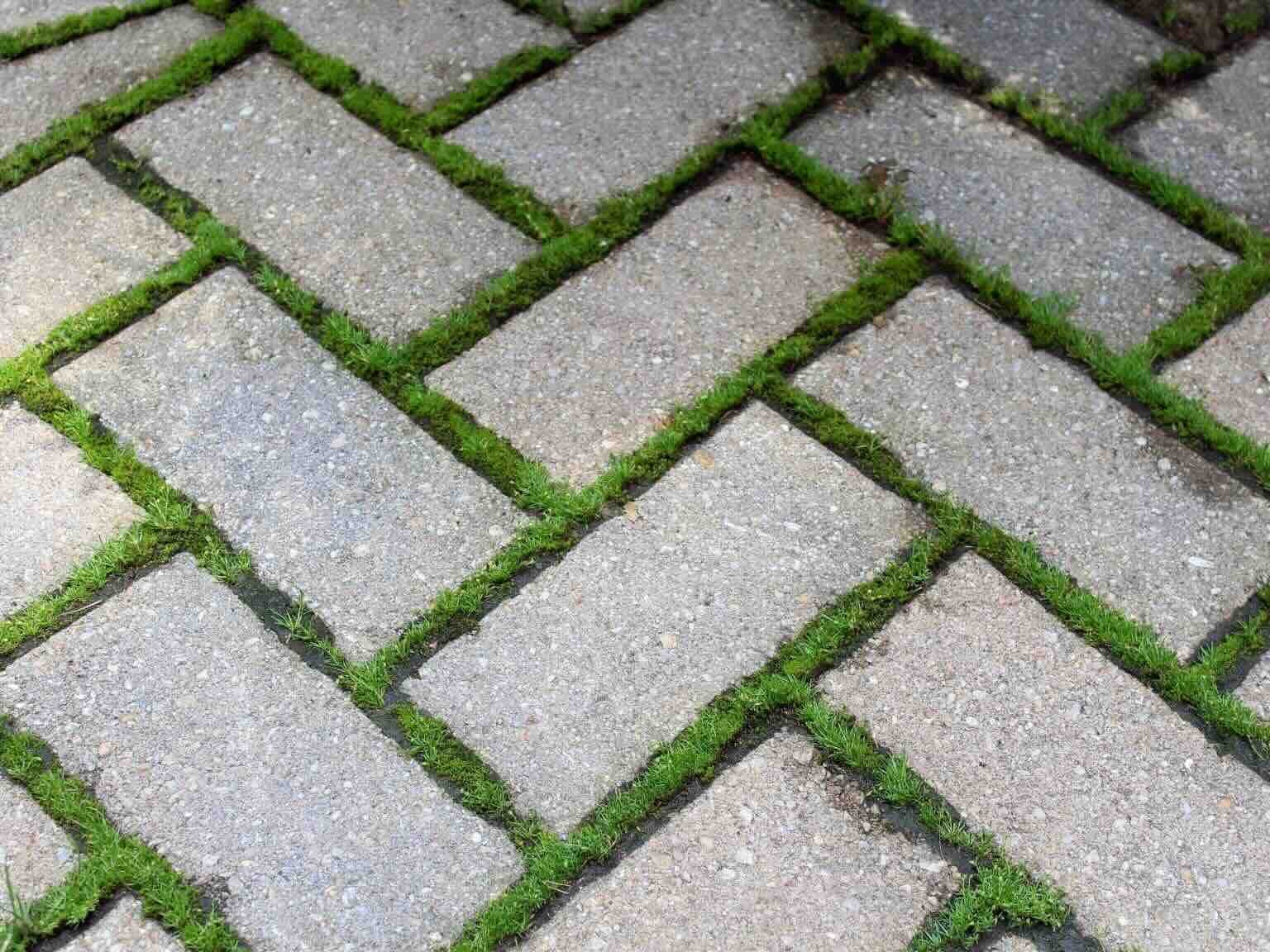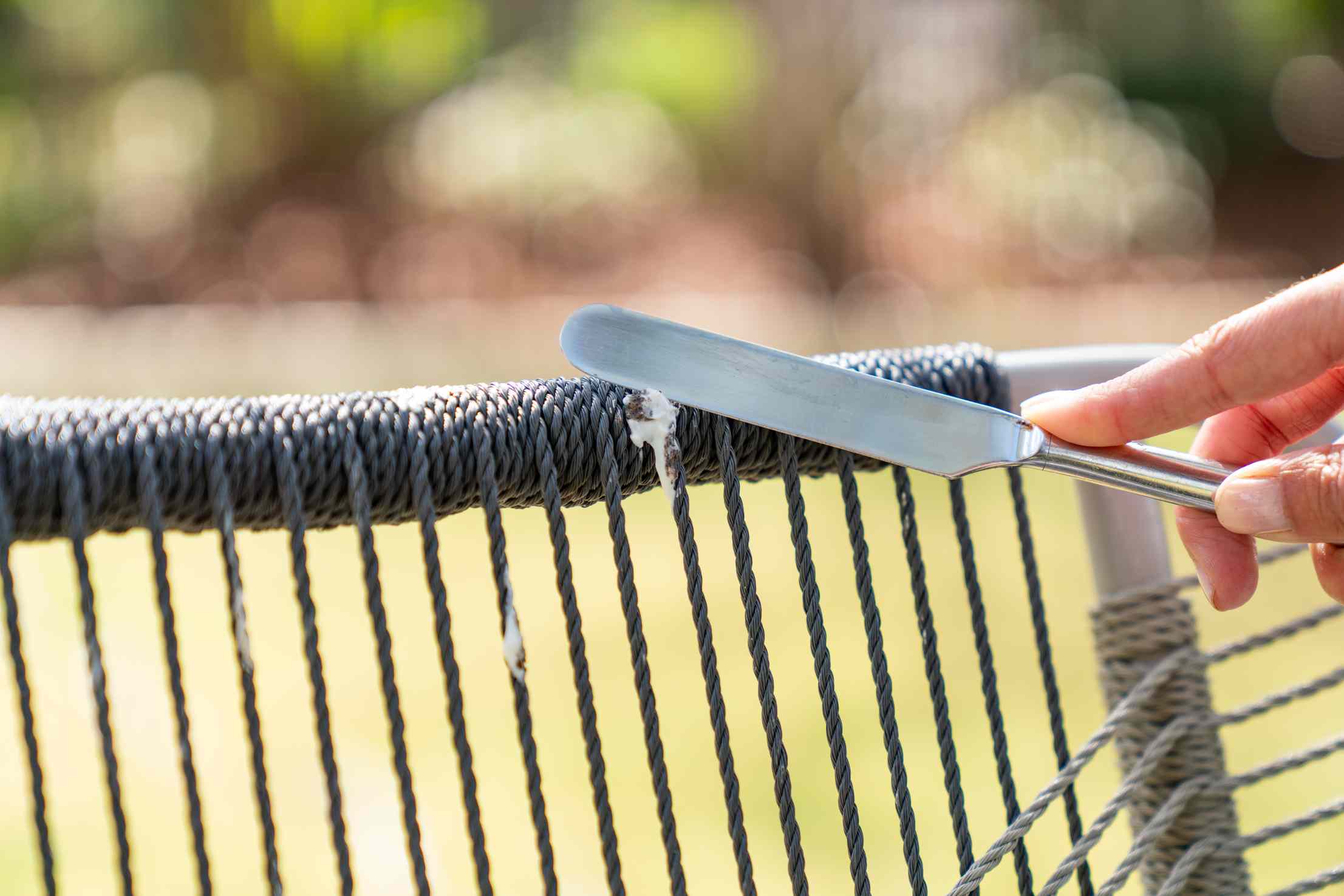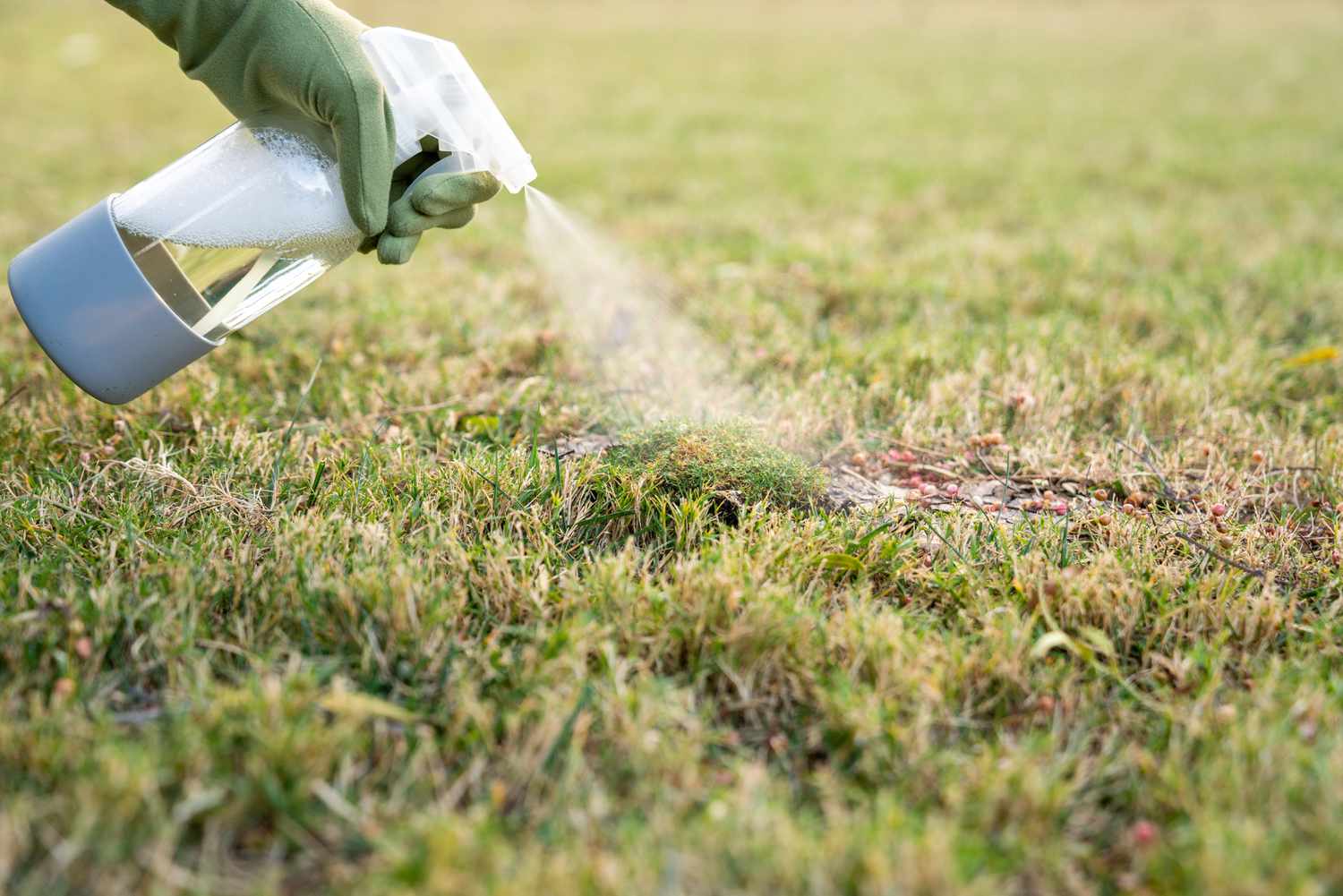Home>Furniture>Outdoor Furniture>How To Get Moss Off A Patio


Outdoor Furniture
How To Get Moss Off A Patio
Modified: March 7, 2024
Looking for ways to remove moss from your outdoor furniture? Discover effective tips and tricks in this comprehensive guide on how to get moss off a patio.
(Many of the links in this article redirect to a specific reviewed product. Your purchase of these products through affiliate links helps to generate commission for Storables.com, at no extra cost. Learn more)
Introduction
Welcome to the world of outdoor living and relaxation! Whether you have a spacious backyard or a small balcony, having a patio area is a delightful way to enjoy the beauty of nature and create a cozy outdoor sanctuary. However, with the joys of outdoor living also comes the inevitable challenge of keeping your patio clean and well-maintained.
One common issue that many patio owners face is the growth of moss. Moss can be a pesky and unsightly problem, taking away from the aesthetic appeal of your outdoor space. But fear not, as we are here to guide you through the process of getting rid of moss and restoring the natural beauty of your patio.
Before we dive into the methods for removing moss, let’s take a moment to understand the factors that contribute to its growth. Moss thrives in areas that are damp, shady, and have poor drainage. These conditions create the perfect environment for moss to flourish, especially on surfaces such as concrete, stone, wood, or brick.
Now that we have a better understanding of moss growth, let’s gather the necessary tools and materials to set ourselves up for success. You will need:
- A stiff brush or broom
- A pressure washer (if available)
- Moss remover solution or household ingredients
- Gloves and protective clothing
- A bucket or spray bottle
Preparation is key when it comes to effectively removing moss from your patio. Start by removing any furniture or plants from the area to provide a clear space for cleaning. Clearing away any debris, such as leaves or soil, will also make the process easier and more efficient.
Before we move on to the methods for removing moss, it’s important to consider the potential environmental impact of certain chemical solutions. If you prefer a more eco-friendly approach, there are natural ingredients that can be used to inhibit moss growth, such as vinegar, baking soda, or even soapy water. These alternatives can be just as effective in removing moss without harming the environment.
With our tools gathered and preparations complete, we are ready to tackle the task of removing moss from your patio. In the following sections, we will explore both manual and chemical methods to help you find the best approach for your specific situation. We will also discuss techniques for preventing moss regrowth and provide tips for cleaning and maintaining your patio to ensure its long-lasting beauty.
So, grab your brush and let’s get started on banishing that stubborn moss and reclaiming your pristine outdoor space!
Key Takeaways:
- Say goodbye to moss on your patio by using vinegar, baking soda, or commercial solutions. Prevent regrowth with sunlight, drainage, and regular maintenance for a beautiful outdoor space.
- Keep your patio moss-free with manual scrubbing, pressure washing, or eco-friendly solutions. Prevent regrowth by improving drainage, increasing sunlight, and regular cleaning.
Read more: How To Get Moss Off Roof
Understanding Moss Growth
Moss is a small, non-vascular plant that typically thrives in moist and shaded environments. It reproduces through spores and forms dense, green mats or tufts on surfaces such as rocks, wood, and concrete. Understanding how moss grows and spreads is crucial in effectively preventing and removing it from your patio.
There are several factors that contribute to the growth of moss. The first is moisture. Moss requires a damp environment to thrive, making areas that are prone to high humidity or excessive moisture more susceptible to moss growth. Poor drainage on your patio can contribute to this, so making sure water flows away from the area or installing proper drainage can help reduce moss growth.
Another important factor is shade. Moss prefers areas with limited direct sunlight, such as the north side of buildings or areas under dense tree canopies. If your patio is in a shaded spot, it is more likely to attract moss. Trimming trees or shrubs to allow more sunlight to reach the area can help discourage moss growth.
The pH level of the soil also plays a role in moss growth. Moss tends to thrive in acidic conditions, so if your patio has soil with a low pH, it may be more susceptible to moss infestation. Conducting a soil test and adjusting the pH level if necessary can help create an environment less favorable for moss.
Now that we have a better understanding of the conditions that facilitate moss growth, let’s explore the different methods and techniques for removing moss from your patio. Whether you prefer a manual or chemical approach, there are various options to choose from to suit your specific needs and preferences.
Keep in mind that preventing moss growth in the first place is the best approach. By implementing strategies to control moisture, increase sunlight exposure, and maintain a balanced pH level, you can significantly reduce the chances of moss taking hold on your patio surfaces. Regular cleaning and maintenance after the moss is removed will also help prevent its return.
Now, let’s roll up our sleeves and discover effective methods for getting rid of that unwanted moss and restoring the natural beauty of your patio!
Tools and Materials Needed
Before you dive into the process of removing moss from your patio, it’s important to make sure you have the necessary tools and materials. Having the right equipment will help you tackle the task effectively and efficiently. Here are the tools and materials you will need:
- A stiff brush or broom: This will be your primary tool for physically scrubbing away the moss from the surface of your patio. Make sure to choose a brush or broom with tough bristles that can effectively remove the moss.
- A pressure washer (if available): If you have access to a pressure washer, it can be a powerful tool for blasting away moss and other debris from your patio. It’s particularly useful for larger areas or surfaces with deep-rooted moss.
- Moss remover solution or household ingredients: There are various moss remover solutions available in the market that can help in effectively eliminating moss from your patio. Look for products specifically designed for outdoor use. Alternatively, you can also create your own solution using common household ingredients such as vinegar, bleach, baking soda, or even soapy water.
- Gloves and protective clothing: It’s important to protect yourself while working with moss remover solutions or scrubbing away moss. Wear rubber gloves to shield your hands and consider wearing protective clothing to prevent any potential skin irritation or exposure to chemicals.
- A bucket or spray bottle: You’ll need a container to mix your moss remover solution if you’re using a homemade solution. A bucket or spray bottle will allow you to apply the solution effectively to the moss-affected areas.
Having these tools and materials ready before you start the moss removal process will ensure that you have everything you need to successfully tackle the task. Remember to follow the safety instructions provided on any commercial moss remover solution you use and take necessary precautions to protect yourself and your surroundings.
Now that you’re prepared with the essential tools and materials, it’s time to move on to the next step: preparing your patio for the moss removal process. This involves clearing the area and getting it ready for thorough cleaning. We’ll discuss the necessary preparations in the next section.
Preparation Before Removing Moss
Before you start removing moss from your patio, it’s important to make some preparations to ensure a smooth and effective cleaning process. Taking the time to prepare properly will help you achieve the best results and avoid any unnecessary damage to your patio surfaces. Here are some essential steps to follow before removing moss:
Clear the area:
Begin by removing any furniture, planters, or other objects from your patio. Clearing the area will give you unrestricted access and make it easier to thoroughly clean the moss-infested surfaces. It will also prevent any accidental damage to your belongings during the cleaning process.
Read more: How To Get Moss Off Of Brick
Sweep or blow away loose debris:
Use a broom or a leaf blower to remove any loose debris such as leaves, dirt, or twigs from the surface of your patio. Getting rid of loose debris will allow you to focus on the moss removal process without interference or obstruction.
Protect nearby plants:
If there are any delicate or sensitive plants near your patio, it’s a good idea to cover them with plastic sheeting or a tarp to protect them from any potential damage caused by the cleaning solution or runoff. This step will help ensure the safety of your plants and prevent any accidental harm during the moss removal process.
Prepare your moss remover solution:
If you’re using a commercial moss remover solution, carefully read and follow the instructions provided on the product label. It’s essential to mix the solution according to the specified ratios and dilution guidelines. If you’re making your own solution using household ingredients, measure and mix them in a bucket or spray bottle according to the recommended proportions. Stir or shake the solution well to ensure it is properly mixed and ready for application.
Put on protective gear:
Before you begin applying the moss remover solution or scrubbing away at the moss, it’s important to protect yourself. Wear sturdy gloves to shield your hands from the cleaning solution or any sharp debris. Additionally, consider wearing protective clothing to prevent any potential skin irritation or exposure to chemicals. Safety goggles or glasses can also provide extra protection for your eyes.
Read more: How To Get Rid Of Moss On A Brick Patio
Test a small area:
Prior to applying the moss remover solution or scrubbing the entire patio surface, it’s recommended to test a small, inconspicuous area first. This test will help you determine the effectiveness of your chosen method and ensure that it doesn’t cause any damage or discoloration to the surface. Observe the test area for any adverse reactions before proceeding with the full cleaning process.
By taking these preparatory steps, you can ensure that your patio is ready for the moss removal process. These preparations will not only help you achieve optimal results but also minimize the chances of any accidental damage to your patio surfaces or surrounding plants. With the area prepared, you’re now ready to move on to the actual methods of removing moss, which we’ll explore in the following sections.
Manual Methods for Removing Moss
When it comes to removing moss from your patio, manual methods can be effective and provide a more hands-on approach. Manual removal involves physically scrubbing or brushing away the moss from the surface of your patio. Here are some manual methods you can employ to eliminate moss:
1. Stiff Brush or Broom:
Using a stiff brush or broom is the simplest and most straightforward method for removing moss from your patio. Start by firmly scrubbing the affected areas in a back-and-forth motion. Apply enough pressure to dislodge the moss from the surface. Regularly rinse the brush or broom with water to remove any accumulated moss and prevent it from spreading. This method is suitable for patio surfaces made of concrete, stones, or bricks.
2. Scraper or Putty Knife:
If the moss is firmly rooted and difficult to remove with a brush or broom, a scraper or putty knife can be used to gently scrape it away from the surface. Be careful not to damage the underlying material. This method works well for patio surfaces made of wood or other delicate materials.
Read more: How To Get Algae Off A Patio
3. Pressure Washer:
If you have access to a pressure washer, it can be a powerful tool for removing moss from your patio. The high-pressure water stream can effectively blast away moss and other debris. Start at a low-pressure setting and gradually increase if necessary. Hold the pressure washer nozzle at a slight angle to avoid damaging the surface. This method is ideal for large areas or surfaces with thick moss growth.
4. Scrubbing Brush with Detergent:
For stubborn moss growth, you can use a scrubbing brush with a mild detergent solution. Dip the brush into the solution and scrub the moss-infested areas. The detergent will help break down the moss and make it easier to remove. Rinse the area thoroughly with water after scrubbing to remove any residue.
5. Vinegar Solution:
Vinegar is a natural and eco-friendly option for removing moss. Mix equal parts of white vinegar and water in a spray bottle and liberally apply the solution to the affected areas. Let it sit for a few minutes to allow the vinegar to penetrate the moss. Then, scrub the moss away with a brush or broom. Rinse the area with water to remove any remaining vinegar.
Whichever manual method you choose, it’s important to be thorough and diligent in removing the moss. Take your time, work in small sections, and make sure to remove as much of the moss as possible, including any roots or spores. This will help prevent regrowth and ensure a cleaner patio surface.
Once you’ve completed the manual moss removal process, you can move on to the next step: considering chemical methods for removing any remaining or stubborn moss. We’ll explore these options in the following section.
Chemical Methods for Removing Moss
In addition to manual methods, chemical solutions can be effective in eliminating moss from your patio. Chemical methods involve using specialized moss remover solutions or household ingredients to target and eradicate moss growth. Here are some chemical methods you can consider:
Read more: How To Get Rust Off Patio
1. Commercial Moss Remover Solutions:
There are various moss remover solutions available in the market specifically formulated to tackle moss growth. These solutions often contain active ingredients like potassium salts, iron sulfate, or herbicidal soaps that effectively kill moss. Follow the instructions provided on the product label for proper application and dilution ratios. Apply the solution directly to the moss-infested areas and allow it to sit for the recommended amount of time. Rinse off the solution with water and scrub away any remaining moss using a brush or broom.
2. Bleach Solution:
Bleach can be an effective moss killer, but it should be used with caution. Mix one part bleach with four parts water to create a solution. Apply the solution to the moss, ensuring it reaches the roots. Let it sit for a few minutes, then scrub away the moss using a brush or broom. Rinse the area thoroughly with water to remove any residual bleach. Take care to avoid contact with plants or other sensitive areas as bleach can cause damage.
3. Vinegar Solution:
Vinegar is a natural and environmentally friendly option for moss removal. Mix equal parts of white vinegar and water in a spray bottle and apply the solution to the mossy areas. Let it sit for a few minutes to allow the vinegar to penetrate the moss. Scrub away the moss using a brush or broom, and rinse the area with water to remove any remaining vinegar.
4. Baking Soda or Sodium Bicarbonate:
Baking soda, also known as sodium bicarbonate, can be used to eliminate moss. Create a paste by mixing baking soda with water to form a thick consistency. Apply the paste to the mossy areas and let it sit for several hours or overnight. Scrub away the moss with a brush or broom, and rinse the area thoroughly with water.
Read more: How To Get Pollen Off Patio Furniture
5. Soap Solution:
A simple solution of soapy water can also be effective in killing moss. Mix a few drops of mild dish soap or liquid soap with water in a bucket. Apply the solution to the mossy areas and let it sit for some time. Scrub away the moss using a brush or broom, and rinse the area with water.
When using chemical solutions, always follow the instructions provided and take necessary safety precautions. Wear gloves and protective clothing to minimize any potential contact with the solution. Consider the potential impact on surrounding plants and the environment, and choose environmentally friendly options whenever possible.
After utilizing chemical methods to remove moss, it’s important to thoroughly rinse the patio surface to remove any residue or potential contaminants. This will help ensure a clean and safe outdoor space.
Now that we’ve explored both manual and chemical methods for removing moss, it’s time to focus on preventing moss regrowth. We’ll discuss preventive measures in the following section.
Preventing Moss Regrowth
After successfully removing moss from your patio, it’s important to take preventive measures to minimize the chances of regrowth. By implementing these strategies, you can maintain a moss-free outdoor space and prolong the beauty of your patio. Here are some effective ways to prevent moss regrowth:
1. Improve Drainage:
Poor drainage is one of the main factors that contribute to moss growth. Ensure that your patio has proper drainage system to prevent the accumulation of excess water. Clear any clogged drains or gutters, and consider installing drainage channels or gravel-filled trenches to redirect water away from the patio area.
2. Increase Sunlight Exposure:
Moss thrives in shady areas with limited direct sunlight. Trim back any overhanging branches or shrubs that are casting shade on your patio, allowing more sunlight to reach the surface. Sunlight helps dry out the patio and makes it less favorable for moss growth.
Read more: How To Get Pollen Off Patio Cushions
3. Regular Cleaning and Maintenance:
Maintaining a clean and well-maintained patio is crucial in preventing moss regrowth. Regularly sweep or blow away leaves, dirt, and other debris that may accumulate on the surface. Remove any fallen leaves or plants that can trap moisture and create an ideal environment for moss to thrive.
4. Use Anti-Moss Products:
You can use anti-moss products specifically designed to inhibit moss growth on outdoor surfaces. These products typically contain ingredients that discourage moss development. Follow the instructions provided on the product label for appropriate application methods and frequency.
5. Adjust Soil pH:
As mentioned earlier, moss prefers acidic soil conditions. Adjusting the pH of your patio soil towards a more neutral or alkaline level can help deter moss growth. Conduct a soil test to determine the pH level and apply appropriate amendments to achieve the desired balance.
6. Regular Patio Maintenance:
Regularly inspect your patio for any signs of moss regrowth. If you notice small patches or early signs of moss, address them promptly with manual cleaning or gentle chemical treatments. By staying vigilant and addressing moss growth early on, you can prevent it from spreading and becoming a larger problem.
By following these preventive measures, you can greatly reduce the chances of moss regrowth on your patio. Incorporating them into your regular patio maintenance routine will help keep your outdoor space beautiful and moss-free for years to come.
Now that we’ve covered the preventive measures, let’s move on to cleaning and maintaining your patio to ensure its long-lasting beauty.
Read more: How To Get Mildew Off Patio Cushions
Cleaning and Maintaining Your Patio
Regular cleaning and maintenance are essential for keeping your patio looking its best and preventing the buildup of moss, dirt, and other debris. By following these tips, you can ensure that your patio remains a beautiful and inviting outdoor space:
1. Sweep or Brush Regularly:
Sweep or brush your patio regularly to remove leaves, twigs, dirt, and other debris. This simple step will help prevent the accumulation of organic matter that can contribute to moss growth and make your patio look dirty.
2. Clean Spills and Stains Promptly:
If any spills or stains occur on your patio, clean them up promptly to prevent discoloration or damage to the surface. Wipe away spills and use appropriate cleaning solutions to tackle stubborn stains. Rinse the area thoroughly with water and dry it to prevent moisture from lingering.
3. Pressure Wash Annually:
Consider pressure washing your patio at least once a year to give it a deep and thorough cleaning. A pressure washer can effectively remove dirt, moss, and other grime from the surface. Be cautious and follow the manufacturer’s instructions to avoid damaging the patio material.
Read more: How To Get Mold Off Of Patio Cushions
4. Scrub Stubborn Stains:
If you come across any stubborn stains or moss regrowth, use a scrub brush and appropriate cleaning solutions to address the problem. Apply the solution to the stained or mossy areas, scrub gently, and rinse off with water. Regularly inspect your patio for any signs of moss or stains and address them promptly to prevent them from spreading.
5. Seal the Patio Surface:
Consider applying a sealant to your patio surface. Sealants provide an extra layer of protection against stains, moisture, and moss growth. Follow the manufacturer’s instructions for application and ensure the patio is clean and dry before sealing.
6. Trim Vegetation and Overhanging Branches:
Regularly trim back any vegetation or overhanging branches that are close to or touching your patio. This will not only help increase sunlight exposure but also prevent debris and moisture from accumulating on the surface, reducing the chances of moss growth.
7. Remove Weeds and Moss Promptly:
If you notice any weeds or moss starting to grow between cracks or in the joints of your patio surface, remove them promptly. Weeds and moss can not only spoil the appearance of your patio but also contribute to the breakdown of the surface over time.
By following these cleaning and maintenance tips, you can keep your patio in excellent condition and minimize the risk of moss regrowth. Regular upkeep will ensure that your outdoor space remains inviting, comfortable, and free from unsightly moss or stains.
With proper cleaning and maintenance, and by implementing preventive measures, you can enjoy a moss-free patio and create a beautiful outdoor oasis for relaxation and enjoyment.
Now that you have all the information you need, it’s time to roll up your sleeves and give your patio the care it deserves!
Read more: How To Kill Moss On Patio Pavers
Conclusion
Congratulations! You now have a comprehensive understanding of how to remove moss from your patio and keep it moss-free for years to come. By implementing the methods and strategies outlined in this article, you can restore the natural beauty of your outdoor space and maintain a clean and inviting patio area.
We began by understanding the factors that contribute to moss growth, including moisture, shade, and poor drainage. Armed with this knowledge, we gathered the necessary tools and materials to effectively remove moss from our patio surfaces. We explored both manual methods, such as using a stiff brush or pressure washer, as well as chemical methods, including commercial moss remover solutions, vinegar, bleach, baking soda, and soap.
In addition to removing moss, we also discussed the importance of taking preventive measures to prevent moss regrowth. By improving drainage, increasing sunlight exposure, and maintaining regular cleaning and maintenance, we can create an environment that is less favorable for moss and other unwanted growth on our patios.
We concluded by emphasizing the importance of regular cleaning and maintenance to keep our patio surfaces looking their best. By sweeping or brushing regularly, promptly cleaning spills and stains, pressure washing annually, and sealing the surface, we can ensure a clean and well-kept patio area.
Remember, prevention is key when it comes to keeping moss at bay. By implementing the preventive measures and adopting regular cleaning and maintenance practices, you can create an outdoor space that is not only moss-free but also a beautiful and inviting place to relax and enjoy the outdoors.
So, say goodbye to those unsightly moss patches, and hello to a revitalized and stunning patio! With the knowledge and tools you now possess, you are ready to take on the task of removing moss and transforming your patio into a space you can truly be proud of.
Now, get out there and enjoy your moss-free oasis!
Frequently Asked Questions about How To Get Moss Off A Patio
Was this page helpful?
At Storables.com, we guarantee accurate and reliable information. Our content, validated by Expert Board Contributors, is crafted following stringent Editorial Policies. We're committed to providing you with well-researched, expert-backed insights for all your informational needs.







0 thoughts on “How To Get Moss Off A Patio”